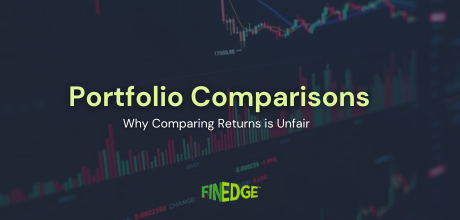7 lesser known facts about Mutual Funds

Mutual Funds have several lesser-known aspects that every investor should understand. From expense ratios and direct plans to potential exit loads and tax implications, being aware of these factors will help you make more informed investment decisions and navigate the risks—especially in volatile markets.
While AMFI’s Mutual Funds Sahi Hai campaign has certainly served to prop up awareness about MF’s as an asset class, there are still many who lack an adequate degree of awareness about them. Here are seven lesser-known facts about Mutual Fund Investments.
There’s an ‘Expense Ratio’
Think about it – nobody works for free, right? Mutual Funds too have offices to maintain, staff salaries to pay, and commissions to distribute to intermediaries. Ever wondered where these come from? The answer lies in the ‘expense ratio’ of a fund, which typically ranges from 1-2.5%. What this essentially means is that 1-2.5% of your invested money is going towards paying the costs incurred by the Mutual Fund. While this isn’t debited from your account upfront, it’s adjusted into the price of your units – which is basically the same thing. Compared to embedded costs in most financial instruments, this is actually quite low.
There’s a ‘Direct Plan’ Option
Besides ‘Regular’ plans, you have the option of going direct with the Asset Management Company. This will save you approximately 0.5% per annum in the form of a lower expense ratio. This cost saving notwithstanding, the decision to go direct can prove very detrimental – especially for new investors with little or no understanding of how debt and equity markets work.
There Might be an ‘Exit Load’ Applicable
Depending upon the fund you’re investing into, there might be an exit load applicable (a penalty for exiting before a specified time limit). This amount typically ranges from 1-3%. If you’re a Mutual Fund SIP investor, note that every SIP installment is considered a separate purchase and your total corpus will therefore become ‘load free’ at different times.
Your Profits are Most Likely Going to be Taxable
Profits from Mutual Funds are taxable. Depending upon the type of profit (dividend or capital gain) or the type of fund (equity oriented or debt oriented), the actual quantum of your tax liability will vary from 10% to as high as 30%.
There May be a Lock-in Period
Check whether your Mutual Fund has a ‘hard’ lock in period which will allow zero interim liquidity. Some funds such as ELSS and FMP (Fixed Maturity Plans) don’t allow you to redeem prematurely, even in case of legitimate financial emergencies.
Even Debt Funds are Risky
Contrary to what your Advisor may have told you, debt-oriented funds can go down in value as well. Any guesses on ones are the riskiest? The GILT (Government Security) Funds are! This is because GILT funds invest into very long dated bonds, and the degree of interest rate risk increases in direct proportion with the average maturity of a bond portfolio.
If the market melts down, even ‘Blue Chip’ funds can lose money
Many investors falsely believe that large cap or “blue chip” Mutual Fund investments are low risk in nature. This is far from the truth – did you know that most blue chip funds tanked 50-60% in the wake of the 2008 meltdown? Though this shouldn’t scare you off investing into them, it’s certainly a fact worth knowing. Markets can be highly irrational, and there’s absolutely no saying when a market in meltdown mode will actually consolidate. You need to be ready and willing to ride out the bad times courageously. For best results, invest into blue chip funds via the Mutual Fund SIP route.
Your Investing Experts
Relevant Articles
Why Comparing Investment Returns Can Be Misleading
At some point, most investors have compared their investment returns with a friend, a colleague, or a number they saw online and wondered why their outcomes looked different. While this instinct is natural, return comparisons are often incomplete and, in many cases, misleading. Understanding why returns differ is far more important than comparing the numbers themselves.
CAGR vs XIRR vs Absolute Return: Understanding Which Return Really Matters
When reviewing investment performance, investors often come across multiple return figures absolute return, CAGR, and XIRR. While these numbers may appear similar, they measure performance very differently. Understanding what each metric represents, and when to use it, is essential for making informed investment decisions and setting realistic expectations.
Responsible Credit Card Usage: Three Principles Every Consumer Should Follow
Credit cards are powerful financial tools when used correctly, offering convenience, rewards, and short-term liquidity. But when used without discipline, they can quickly turn into high-interest liabilities. Understanding a few essential principles can help you manage your cards responsibly, maintain a strong credit score, and avoid stress caused by compounding debt.
.png)

.png)
.png)